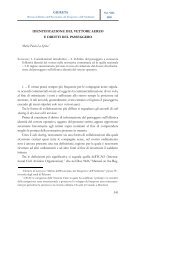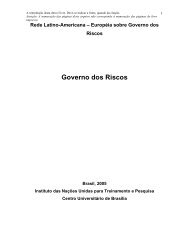Rome II and Tort Conflicts: A Missed Opportunity Abstract Contents
Rome II and Tort Conflicts: A Missed Opportunity Abstract Contents
Rome II and Tort Conflicts: A Missed Opportunity Abstract Contents
Create successful ePaper yourself
Turn your PDF publications into a flip-book with our unique Google optimized e-Paper software.
SYMEON C. SYMEONIDES ROME <strong>II</strong> AND TORT CONFLICTS<br />
account” of the “safety <strong>and</strong> conduct” rules of the state of conduct. However, as<br />
discussed later, this provision offers only limited relief.<br />
A more nuanced escape clause would soften the common-domicile rule <strong>and</strong><br />
produce more rational results, not only in the above cases, but also in other<br />
132<br />
exceptional cases, or in cases in which that rule adversely affects the rights of third<br />
parties. The latter problem is illustrated by two hypotheticals. The first involves a<br />
single-car accident in Portugal caused in part by faulty road conditions <strong>and</strong> resulting<br />
in injury to the car’s Spanish passenger. The passenger sues the local Portuguese<br />
authority responsible for maintaining the road, <strong>and</strong> the authority then impleads the<br />
car’s Spanish driver for contribution <strong>and</strong> indemnification for his fault in the accident.<br />
The driver <strong>and</strong> passenger are married to each other <strong>and</strong> Spanish, but not Portuguese,<br />
law prohibits interspousal suits. In such a case, one could argue that the local<br />
authority’s claim for contribution falls outside the scope of the common-domicile<br />
133<br />
rule, but if the argument fails, the only way to avoid Spanish law would be by<br />
stretching the wording of the “closer connection” escape. In the second hypothetical<br />
the local authority is not involved, the car was rented in Portugal, <strong>and</strong> the laws are<br />
reversed so that Portuguese, but not Spanish, law prohibits interspousal lawsuits. The<br />
injured passenger sues the driver <strong>and</strong> the car’s insurer invoking Spanish law, while the<br />
insurer denies coverage invoking Portuguese law. Again, if the insurer’s obligation for<br />
134<br />
coverage falls within the scope of the common-domicile rule, then the only way to<br />
avoid Spanish law would be through the difficult road of employing the “closer<br />
connection” escape.<br />
In conclusion, while both the adoption of the common-domicile rule <strong>and</strong> the<br />
inclusion of an escape clause in Article 4 are significant steps in the right direction,<br />
both the rule <strong>and</strong> the escape would have benefitted from more nuanced drafting. In the<br />
132. A case like Schultz v. Boy Scouts of America, 480 N.E.2d 679 (N.Y. 1985), is arguably such an<br />
exceptional case. Schultz involved a suit by New Jersey parents against a New Jersey charitable<br />
corporation for injury resulting from a sexual molestation of the plaintiffs’ child by one of<br />
defendant’s employees in New York. Invoking the common-domicile rule, the New York Court<br />
of Appeals applied New Jersey charitable immunity law, denying recovery.<br />
133. The argument would be based in part on art. 20 of <strong>Rome</strong> <strong>II</strong>, which provides that, if a creditor<br />
has a claim against several debtors who are “liable for the same claim,” the question of that<br />
debtor’s right to dem<strong>and</strong> compensation from the other debtors “shall be governed by the law<br />
applicable to that debtor’s non-contractual obligation towards the creditor.”<br />
134. The pertinent <strong>Rome</strong> <strong>II</strong> articles for answering this question are art. 18 & 19. Art. 18 is not<br />
particularly helpful, except perhaps indirectly, because it only applies to the victim’s right to<br />
“directly” sue the tortfeasor’s insurer (i.e., without joining the tortfeasor) <strong>and</strong> not to the merits<br />
of the suit. The article allows the victim to chose between the law governing the insurance<br />
contract <strong>and</strong> the law governing the tort. Art. 19 provides that, when a creditor has a noncontractual<br />
claim against a debtor, <strong>and</strong> a third person has a duty to satisfy the creditor, “the law<br />
which governs the third person’s duty to satisfy the creditor shall determine whether . . . the<br />
third person is entitled to exercise against the debtor the rights which the creditor had against<br />
the debtor under the law governing their relationship.”<br />
56 AMERICAN JOURNAL OF COMPARATIVE LAW (2008) PAGE 30 OF 46



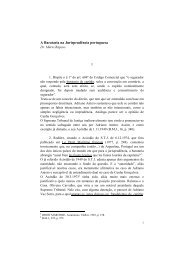

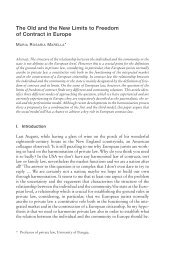

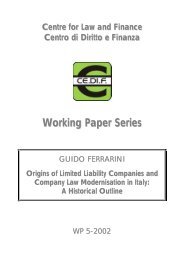
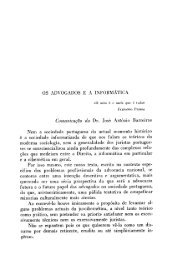
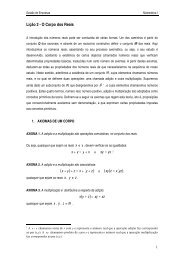
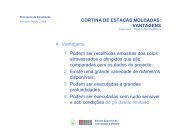
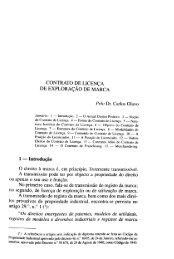
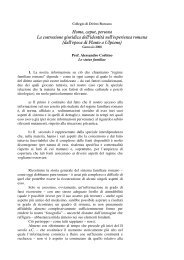
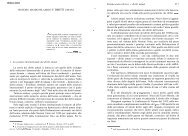

![Luigi Sapio Nozione di islām La parola “islām” [ ] è il mas.dar1 ...](https://img.yumpu.com/15836073/1/185x260/luigi-sapio-nozione-di-islam-la-parola-islam-e-il-masdar1-.jpg?quality=85)
